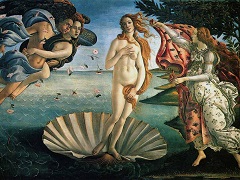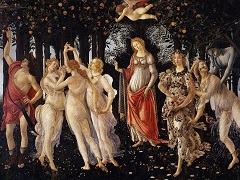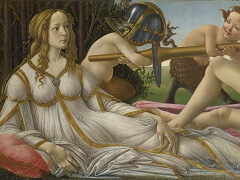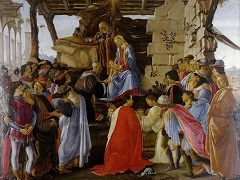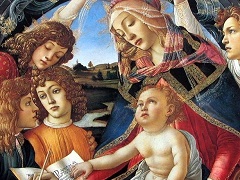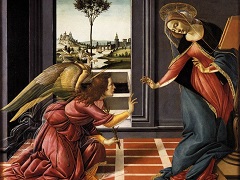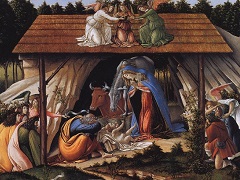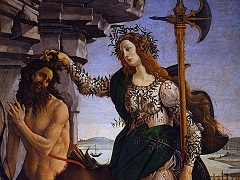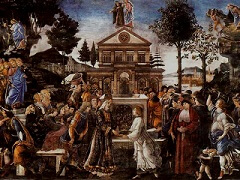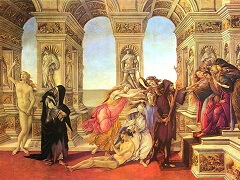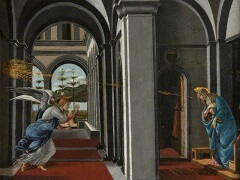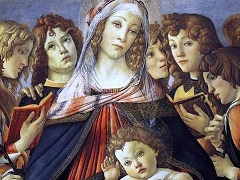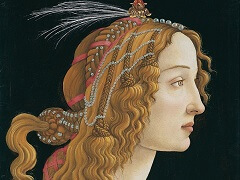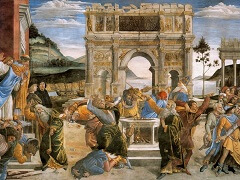The Virgin and Child with Five Angels by Sandro Botticelli
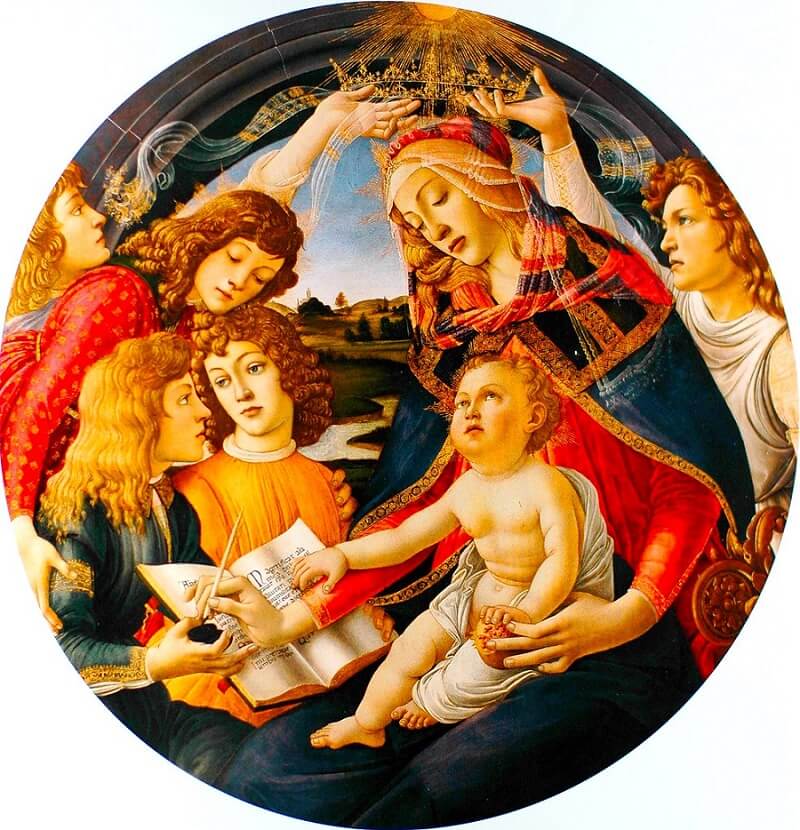
Botticelli created The Virgin and Child with Five Angels in the early 1480s. At the time, it was in all likelihood his most famous picture of the Virgin. Botticelli has portrayed the Virgin writing, engaged in completing the final lines of a book held out towards her by two angels. She is moving her quill towards the inkpot with a graceful movement of her hand, in order to finish the text which is being dictated to her by the Christ Child. It has been possible to identify the lines on the left-hand side of the book as the hymn of St Zacharias, a song on the birth of his son, John the Baptist, principal patron saint of Florence. It would thus appear probable that Botticelli had executed the painting for a Florentine client. On the right-hand side of the book are the first words of the Magnificat, Mary's hymn of praise, which gave the picture its name. Together with the rather earlier Adoration of the Magi, this picture is one of Botticelli's first round pictures, or tondi. Such tondi were very popular in 15th- and 16th-century Florence. However, they served not as altarpieces but as decoration in the rooms of secular buildings, such as private palaces or guild houses. Botticelli has integrated his large figures into the circular format of the painting in a particularly sensitive manner. The slightly bowed posture of Mary's body and her left arm form a semicircle that follows the curve of the frame. This matching of the composition to the pictorial form is repeated on the opposite side in the bent right arm of the angel who is leaning over the two angels in front in order to cast a glance at the book lying open before them. It is evident, however, that Botticelli had some difficulty accommodating the fourth angel on the left-hand side, who is in the process of placing the heavenly crown upon Mary's head; indeed, it seems almost as if the other three angels are squeezing him out of the painting.
This portrait of the Virgin represents the costliest tondo that Botticelli ever created: in no other painting did he employ so much gold as in this one, using it for the ornamentation of the robes, for the divine rays, and for Mary's crown, and even utilizing it to heighten the hair colour of Mary and the angels. As the most expensive paint, gold was normally used only sparingly. Its liberal employment here will therefore have been at the express wish of the person commissioning the work.

